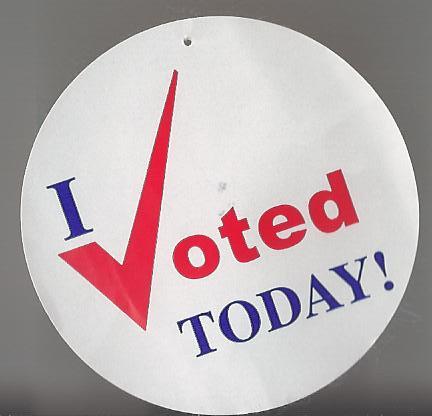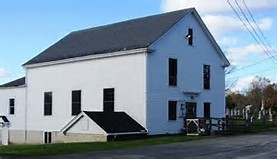Counting the Ballots
One day before Election Day! Details and developments in this year’s election, presidential and local, have filled news networks, newspapers, conversations, and lawn signs for over a year
Tomorrow (we hope) it will be over. Decided. Finished. At least for 2016.
One of the many differences between this election and previous ones is the allegation by one of the candidates that the results are rigged. Maybe people vote more than once. Maybe dead people vote.
And, it’s true, voting machines do occasionally break down or malfunction. Not often, and usually quickly fixed, but it does happen.
But not in my home town.
My town (Edgecomb, Maine) has approximately one thousand registered voters, divided fairly evenly between Republicans, Democrats and Independents … with a liberal sprinkling of Green Party members. In past presidential elections about 80% of registered voters exercised their civic right and duty and showed up at the Town Hall on election day.
But there are no voting machines in Edgecomb. We vote the old-fashioned way. We count ballots by hand, and we double and triple check each other. And there have been no accusations of voter fraud. Ever. This year, I’ll be one of those counting.
I wrote that on Facebook a couple of weeks ago and one of my friends said voting by paper ballots was “quaint.”
Maybe so. But it works. Maybe not in a large city, where it would take days to count the ballots. But in a small town? Absolutely.
Registered voters walk into Town Hall, where a volunteer locates their name in a large ledger and checks the name off. Rarely, the volunteer asks the person who they are. Most of the time he or she knows. We’re all neighbors. No proof of identification needed.
Handed a paper ballot and a pencil, the voter goes to one of several open “booths” at the side of the room and fills in the oval next to the candidates of his or her choice. They then fold their ballot and slide it into the slot in a pine box on a table at the end of the room. (There are two boxes: the wooden box, used on election day, and another, blue metal, box that is locked until the polls are closed, which contains absentee and early voting ballots.)
No one remembers for how many years that wooden ballot box has been used – but estimates start at “at least a hundred years.” So — ballots for Roosevelt (maybe both of them) may have been placed in that box.
Tradition!
Polls in Maine close at eight p.m. Ballot counters (including my husband and I) will get to the Town Hall by 7:45, ready to work. (One of our fellow local ballot counters this year is, by chance, certified as an international election monitor. She’s monitored elections in the Middle East and Africa. So — in case of an unforeseen problem – we have an expert on hand!)
Ballots are removed from the two boxes, unfolded, and put in piles of fifty.
Then pairs of two voters (one from each major party) take each pile and place the ballots between them. Using the “verbal concurrent” method, they count the lot together, each keeping a tally sheet. One reads the office and the choice of candidate and marks it on his or her summary sheet. His partner repeats the office and candidate and enters the vote on her summary sheet. When the team completes all fifty ballots, they compare their totals. If tallies do not agree, they must recount.
No comments on results are permitted.
Each pile of fifty counted ballots and the two tally sheets are given to the Town Clerk, who checks that the tally sheets agree, bands the ballots with one tally sheet, and uses the other as input to a “grand tally” of town votes. Tally sheets are sealed in a tamper-proof container with the voted ballots.

Edgecomb Town Hall
The same procedure is done for referendum issues. (This year Maine has referendums on marijuana legalization, funding public education, firearm background checks, raising the minimum wage, and ranked choice voting. All important issues.)
Paper ballots are not valid if the voter signs or initials them, puts a symbol on the ballot that could identify him or her, adds a comment or statement, or votes for more than one candidate for one office. Stickers may not be used to vote for write-in candidates.
I don’t know how long it will take us to count the ballots tomorrow night. It will be my first time. I’m told by more experienced counters that sometimes they finish by 9:30 — other times not until 11:00. News bureaus sometimes call to check results. County police are on call during the process, and move between voting locations to ensure no problems arise.
It’s all a part of the democratic process in the United States. And, no matter what the results of the election, in my town, state, or even in the country — although I have preferences about what I’d prefer as the results — I’m proud to be part of the continuum of ballot counters that have kept our elections honest since the beginning.
It’s what we do in this country.
See you at the polls!
Lea Wait's Blog
- Lea Wait's profile
- 506 followers



